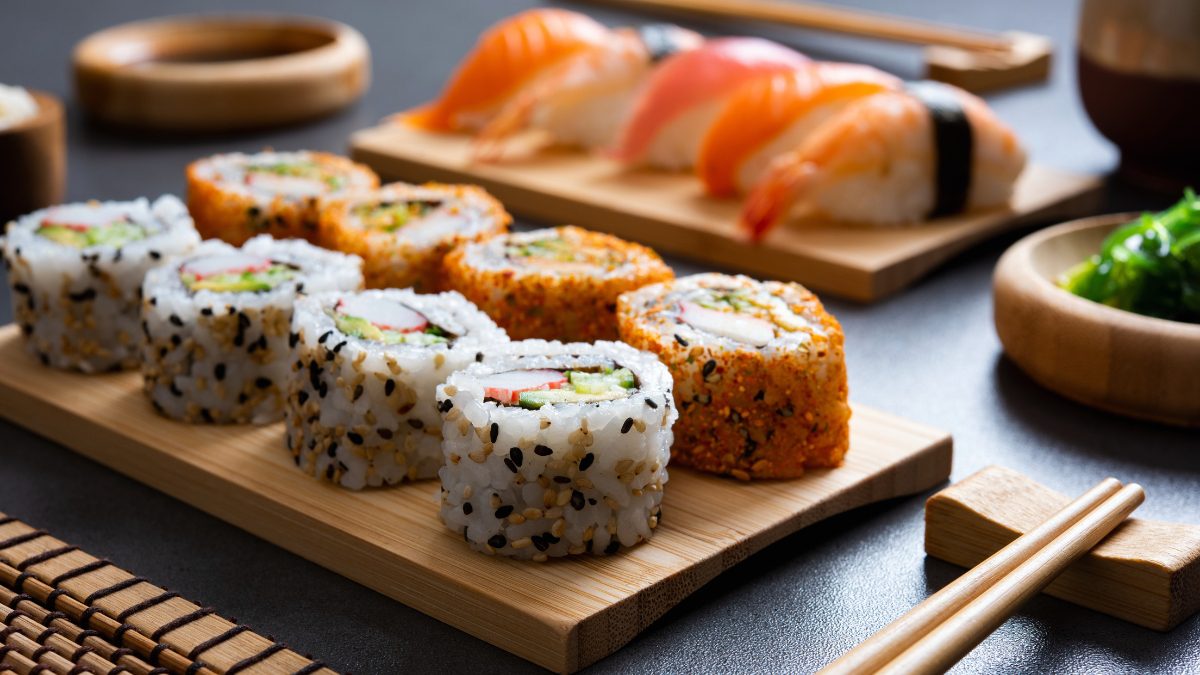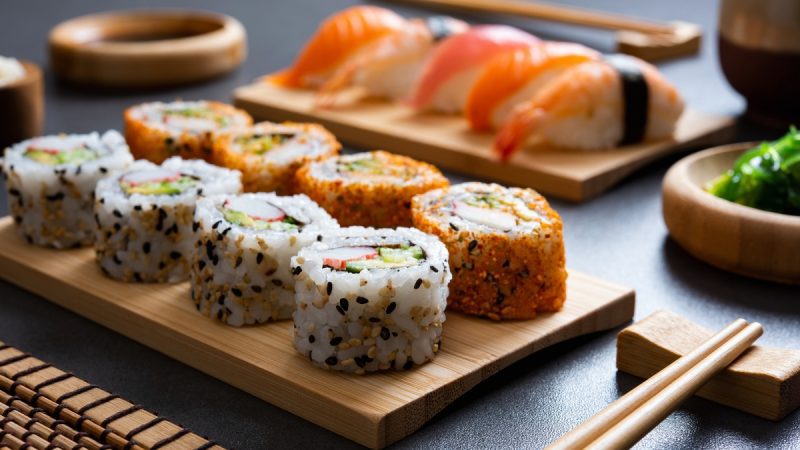Imagine sitting at a bustling sushi bar in Tokyo, the chef’s knife flashing as he expertly slices through a glistening piece of tuna. This exquisite moment is the culmination of a journey that began over a thousand years ago in Southeast Asia. Sushi, a dish that seamlessly marries simplicity with sophistication, has a history as rich and diverse as its flavours. Discover how this iconic dish became a symbol of Japanese culture and a beloved culinary treasure worldwide.
The History & Origins Of Sushi

Sushi, as we know it today, has a rich and complex history that spans centuries and various regions of Asia before it became the global phenomenon it is now. The origins of sushi can be traced back to the 2nd century AD in Southeast Asia. The earliest form of sushi was preserving fish in fermented rice, known as narezushi. It involved packing fish into salted rice, which caused it to undergo a fermentation process. The rice was typically discarded, and only the fish was consumed. This process spread from Southeast Asia to China, eventually reaching Japan around the 8th century.
In Japan, sushi certainly underwent significant transformations. By the Muromachi period (1336–1573), a new method called namarezushi had emerged. Unlike narezushi, the rice and fish were consumed together, though the fermentation process still took several months.
The next major development came in the Edo period (1603–1868), where hayazushi (fast sushi) was created. This version did not require long fermentation. Instead, fish and rice were combined with vinegar, which made the dish ready to eat almost immediately. This innovation made sushi more accessible and began to shape the modern sushi experience.
The early 19th century saw the birth of nigirizushi, the form of sushi most recognisable today. Hanaya Yohei invented this style in Edo (modern-day Tokyo). He created hand-pressed rice balls topped with slices of raw fish, making sushi a quick, portable meal. Nigirizushi also became popular among the bustling population of Edo.
Also Read: Ever Heard Of Wallet Pizza, Naples’s Street Food Gem, The Deliciously Folded Pizza Portafoglio?
Integration Into Japanese Cuisine

Sushi’s integration into Japanese cuisine was gradual but profound. As Japan opened up to international trade and travel during the Meiji Restoration (1868–1912), sushi began to evolve with new ingredients and techniques. It is a food that reflects Japan’s rich maritime resources and meticulous craftsmanship. Sushi chefs, known as itamae, undergo years of rigorous training to master the art of sushi-making, which includes preparing the fish, crafting the perfect rice, and the delicate balance of flavours.
Also Read: Chai And Bun Maska In London? Chai Guys Bakehouse Is Dishing Out An Authentic Indian Experience!
Sushi’s journey from a local Japanese delicacy to a global culinary phenomenon began in the mid-20th century. After World War II, as Japan’s economy grew and more Japanese emigrated abroad, sushi began to gain popularity in the United States and other Western countries. One of the pivotal moments in sushi’s international popularity was certainly the invention of the California Roll in the 1960s. This Americanized version of sushi, which included avocado, cucumber, and crab meat, appealed to Western tastes and also helped introduce sushi to a broader audience.
Today, sushi restaurants can be found in nearly every corner of the globe, from high-end establishments serving omakase (chef’s choice) to conveyor belt sushi chains offering affordable options. No matter where it’s enjoyed, it certainly continues to captivate people worldwide.
Cover Image Courtesy: Canva





